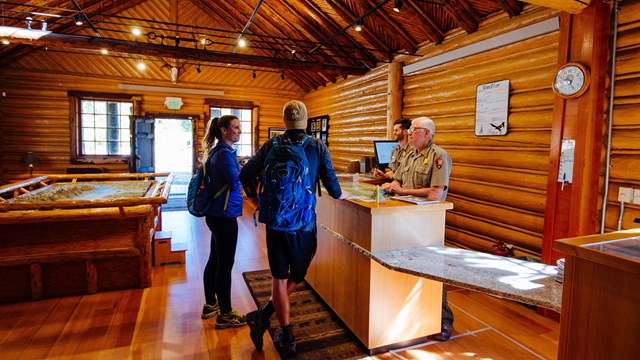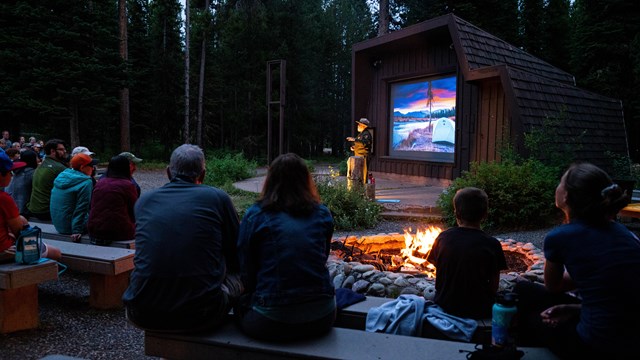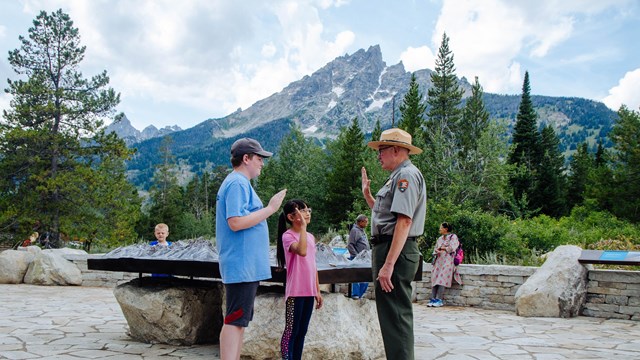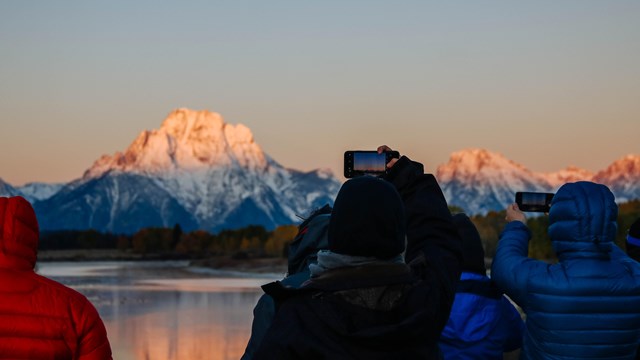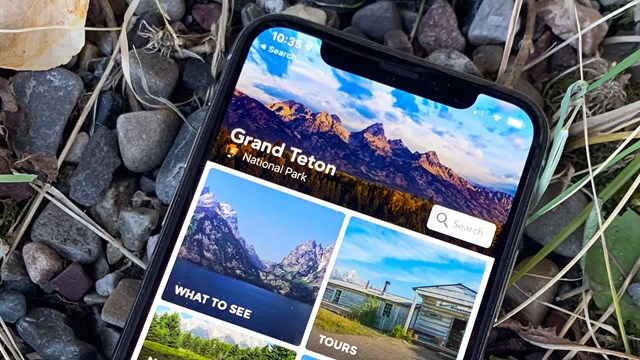Wildlife in Grand Teton
Grand Teton National Park is home to a wide variety of animals. Grizzly and black bears, bison, moose, elk, pronghorn, and more live throughout the park.
All animals require food, water and shelter. Each species also has particular living space, or habitat, requirements. Knowing these requirements helps understand where wildlife can be found. To learn more about wildlife habitats and animal behavior, attend ranger-led programs, and review the tips for viewing wildlife below, and download the mammals brochure for Grand Teton National Park.
Always keep a safe distance when viewing wildlife. Whether you are in your vehicle or on foot, you must maintain a distance of at least 100 yards from bears and wolves, and 25 yards from all other wildlife. Animals in the park are wild and may act aggressively if approached.
Watch a video podcast with helpful tips to view wildlife in Grand Teton National Park.
Wildlife Viewing Areas
Oxbow Bend
One mile east of Jackson Lake Junction. Slow-moving water provides habitat for fish such as suckers and trout that become food for river otters, ospreys, bald eagles, American white pelicans and common mergansers. Look for swimming beavers and muskrats. Moose browse on abundant willows at the water's edge. Elk occasionally graze in open aspen groves to the east.
Timbered Island
A forested ridge southeast of Jenny Lake. Small bands of pronghorn antelope, the fastest land animal in North America, forage on nearby sagebrush throughout the day. Elk leave the shade of Timbered Island at dawn and dusk to eat the grasses growing among the surrounding sagebrush.
Mormon Row
East of US Highway 26/89/191, one mile north of Moose Junction. Along Mormon Row and Antelope Flats Road, bison and pronghorn can be seen grazing in spring, summer and fall. Also watch for coyotes, Northern harriers, and American kestrels hunting mice, Uinta ground squirrels, and grasshoppers. Sage grouse, sage thrashers and sparrows also frequent the area.
Snake River
Jackson Lake Dam south to Moose. Elk and bison graze in grassy meadows along the river. Bison also eat grasses in the sagebrush flats on the benches above the river. Bald eagles, ospreys and great blue herons build large stick nests within sight of the river. Beavers and moose eat willows that line the waterway.
Cascade Canyon
West of Jenny Lake. Look for, but do not feed, golden-mantled ground squirrels at Inspiration Point. Pikas and yellow-bellied marmots live in scattered boulder fields. Mule deer and moose browse on shrubs growing at the mouth of the canyon. Listen for the numerous songbirds that nest in the canyon. Habituated animals such as ground squirrels often beg for food. Feeding human food to animals increases dependency on unnatural food sources. Do not let animals bite you; they may carry diseases such as rabies.
Blacktail Pond
Half-mile north of Moose on US Highway 26/89/191. Old beaver ponds have filled with sediment and now support grassy meadows where elk graze during the cooler parts of the day. Several kinds of ducks feed in the side channels of the Snake River. Moose browse on willows growing along the river.
Be a Responsible Wildlife Observer
- Use binoculars, spotting scopes or long lenses for close views and photographs. Always maintain a safe distance of at least 100 yards from wolves and bears, and at least 25 yards from all other wildlife.
- Never position yourself between an adult and its offspring. Females with young are especially defensive.
- It is illegal to feed wildlife, including ground squirrels and birds. Feeding wild animals makes them dependent on people, and animals often bite the hand that feeds them.
- Do not harass wildlife. Harassment is any human action that causes unusual behavior, or a change of behavior, in an animal. Repeated encounters with people can have negative, long-term impacts on wildlife, including increased levels of stress and the avoidance of essential feeding areas.
- Nesting birds are easily disturbed. For wildlife, raising young is a private affair. If an adult bird on a nest flies off at your approach, or circles you or screams in alarm, you are too close to the nest. Unattended nestlings readily succumb to predation and exposure to heat, cold, and wet weather.
- Allow other visitors a chance to enjoy wildlife. If your actions cause an animal to flee, you have deprived other visitors of a viewing opportunity. Use an animal's behavior as a guide to your actions.

